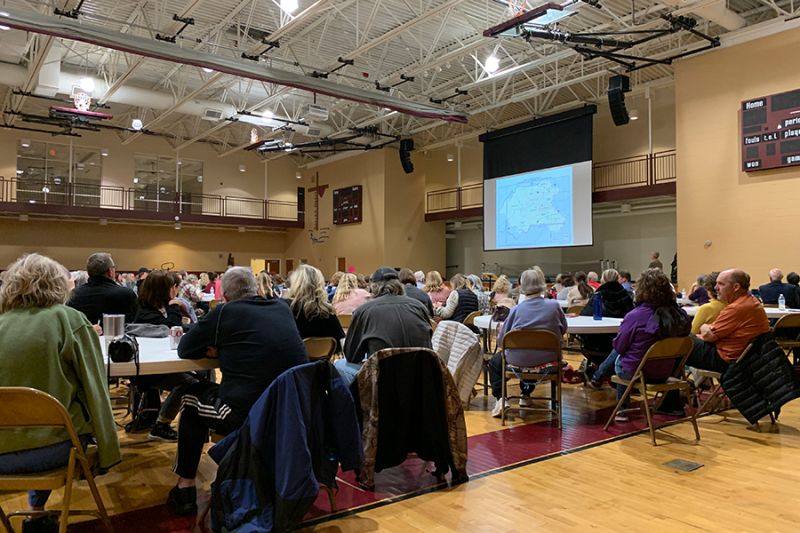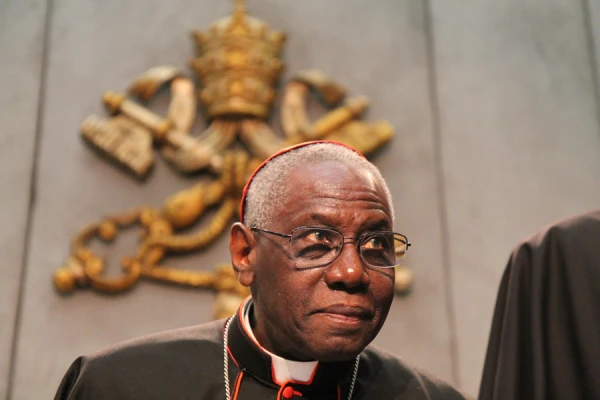
Washington D.C., May 30, 2023 / 14:50 pm (CNA).
A new plan approved in the Archdiocese of St. Louis will reduce the number of parishes from 178 to 134 amid concerns about a lack of priests and shrinking Mass attendance, Archbishop Mitchell Rozanski announced over the weekend.
The plan, called “All Things New,” closes 35 churches, merges their parishes into neighboring parishes, and merges 15 other parishes into five new parishes. The plan also creates a new parish for the Spanish-speaking community in St. Charles County. In the end, this leaves the archdiocese with 44 fewer parishes than it has now.
Some of these changes will be implemented as soon as August, but the plan will not be completed until 2026.
“As your archbishop, I have the duty to provide for the pastoral care of all people in the archdiocese,” Rozanski said in a video announcing the changes. “‘All Things New’ has called us to ask ourselves what our parishes, ministries, and institutions need to look like in order to effectively share the faith that is sustainable for our children and generations to come.”
The archdiocese covers the City of St. Louis and 10 surrounding counties.
One of the reasons for reducing the number of parishes is poor Mass attendance. The archbishop said that about 5,000 Catholics are either leaving or not reengaging with the Church after high school or college annually.
“Over the past decade, we’ve also seen fewer people attending Mass,” Rozanski said. “Our numbers should be growing. We have more baptisms than funerals. Nearly 1,000 people enter the Church each year. But in 2021, the number of Catholics in the Archdiocese of St. Louis dipped below 500,000 for the first time since the 1960s.”
Rozanski also noted that many Catholics have moved out of the city and into the surrounding counties, but the parish lines have yet been changed to reflect that. He noted that in one example, there are 10 priests for about 18,000 Catholics in North County, but there are only three priests serving 18,000 Catholics in one parish in St. Charles County. The changes seek to make these ratios more proportional.
“We find ourselves with too few priests in large parishes and a disproportionate number of priests in small parishes,” the archbishop said.
Another problem Rozanski noted was the priest shortage. According to projections from the archdiocese, there would be more parishes than priests by 2025 if the archdiocese failed to make any changes. He said that 41% of active or retired priests are older than 70.
Before making the changes, the archdiocese held 350 listening sessions, with at least one in each of the 178 current parishes. It also considered feedback from 70,000 Catholics in the archdiocese who participated in a survey. Feedback was also solicited from 18,000 school parents, staff, teachers, donors, and community partners. The archdiocese also held focus groups and talked with civil and business leaders.
Rozanski said the feedback helped structure the final plan, which was approved by the All Things New Planning Committee. The committee included priests, deacons, parish life coordinators, lay leaders, and religious within the archdiocese. In addition to considering the feedback, they also looked into financial data and other information.
The plan makes changes to how the archdiocese uses resources, which the archbishop said puts pastoral services closer to the people and parishes to foster collaboration across parish boundaries. He said the changes will help the archdiocese more effectively go into the community and bring Christ to people.
“I pray this first phase of work will equip us to build new, creative models of ministry together,” Rozanski said.
Some Catholics in the archdiocese have been critical of the changes because of the extent to which they will shake up parishes. More than 3,000 Catholics in the archdiocese signed a petition that asked the archbishop to halt the plan about two months ago.
The petition criticized the structure of the survey and claimed it only allowed the faithful to answer predetermined questions without being allowed to address specific situations in their own parish. It also claimed the process would cause mistrust in Church leadership, which could drive Catholics away.
In his announcement, Rozanski acknowledged “the profound impact a parish community can have on us and how these good and faithful institutions have formed our families.” He said he wished the changes were not necessary but also maintained optimism.
If you value the news and views Catholic World Report provides, please consider donating to support our efforts. Your contribution will help us continue to make CWR available to all readers worldwide for free, without a subscription. Thank you for your generosity!
Click here for more information on donating to CWR. Click here to sign up for our newsletter.





These changes are disruptive to be sure. I’ve been in my parish since the 1960s and it is sad to see it being “subsumed” into a neighboring parish. However, the demographics have changed dramatically here since my childhood, large numbers of parishoners “headed west” for greener pastures, so that the energy of our church community has greatly diminished. It was already merged with two other parishes several years ago due to the falling numbers of parishioners. Now, the remaining congregation consists of a graying remnant of the faithful, (I being one), with few children attending. Regarding the grade school, this year it graduated about a dozen students, many of which were not Catholic. (My eighth grade class, back in the day, had close to 60, all from Catholic families.) My parish, like many in this area, is dying.
Reorganizing and reforming the parishes will make better use of resources and, at least for a few years, will result in fuller masses and hopefully create a critical mass that could inspire people and re-energize their faith. This is at least something to hope for. To not make these changes would just allow the deterioration to continue.